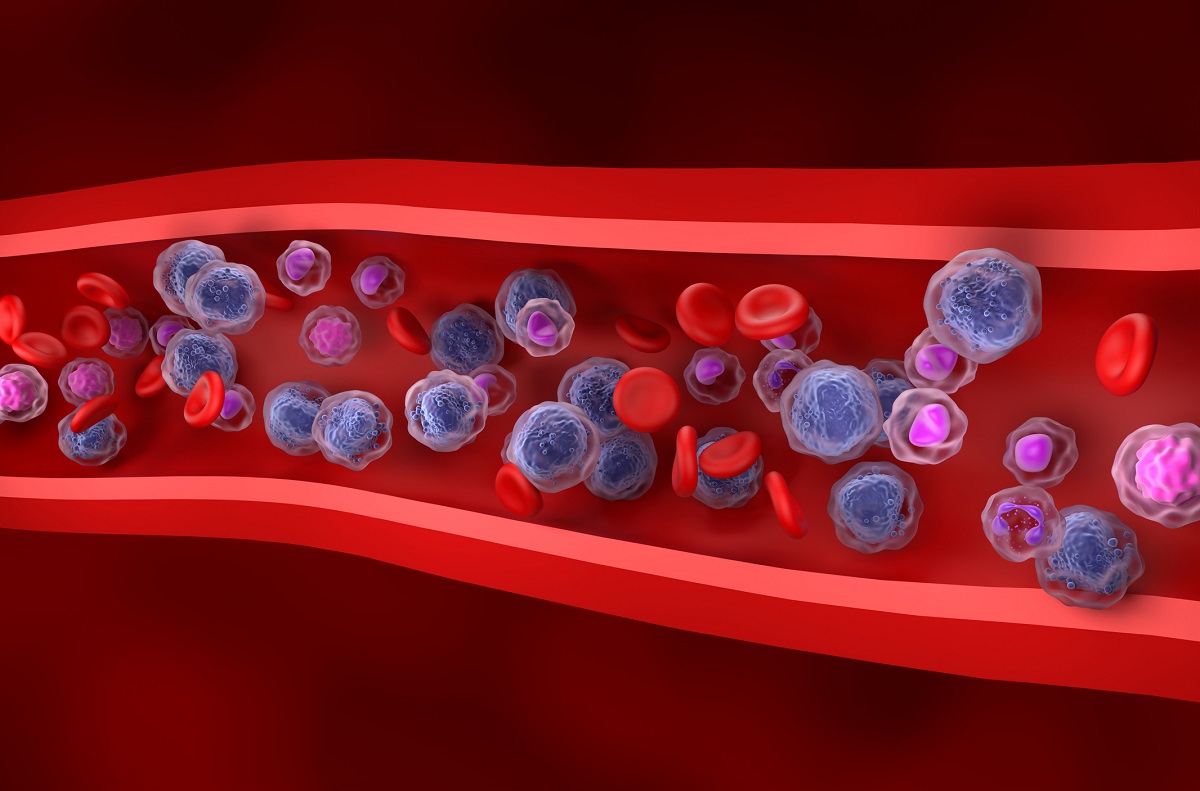KEY TAKEAWAYS
- The QuANTUM-First phase 3 trial aimed to assess impact of CONT therapy on Q efficacy in newly diagnosed pts with FLT3-ITD+ AML.
- The endpoints were OS, RFS and CIR.
- The results showed that the Q CONT in newly diagnosed patients with FLT3-ITD+ AML, without allo-HCT, significantly delays relapse or death.
The trial results demonstrated that newly diagnosed patients (pts) with FMS-like tyrosine kinase 3-internal tandem duplication–positive (FLT3-ITD+) Acute Myeloid Leukemia (AML), adding the oral, highly potent, selective type 2 FLT3 inhibitor quizartinib (Q) to standard chemotherapy (CTx) ± allogeneic hematopoietic cell transplantation (allo-HCT), followed by quizartinib or placebo (P) continuation (CONT) monotherapy for up to 36 cycles (3 years), decreased the relative risk of death by 22% versus placebo.
Mikkael A. Sekeres and the team aimed to evaluate the impact of CONT therapy on Q efficacy in newly diagnosed FLT3-ITD+ AML pts, the study analyzed rates of overall survival (OS), relapse-free survival (RFS), and cumulative incidence of relapse (CIR).
Researchers enrolled adult pts (aged 18-75 years) with FLT3-ITD+ AML and randomized 1:1 to administer them with Q- 40 mg/d or P alongside standard 7+3 induction CTx.
Patients were stratified based on region, age, and initial white blood cell (WBC) count, who were achieving incomplete remission (CR) or CR with incomplete neutrophil or platelet recovery (CRi) received up to 4 cycles of consolidation CTx + Q or P, with potential for allo-HCT.
The Q/P therapy was halted before allo-HCT and not resumed during transplantation. Followed by CONT phase, with Q 30-60 mg/d or P for up to 36 cycles. OS was evaluated from randomization in the intent-to-treat pts receiving CONT; CIR and RFS were recorded for CR pts receiving CONT.
RFS was prespecified; OS and CIR were post hoc. PS-based analyses considered baseline factors (age, sex, WBC count, NPM1 mutation, marrow blast percentage, allo-HCT pre-CONT, anthracycline type).
Results indicated that of 539 randomized pts, 208 (38.6%; 116 Q, 92 P) were treated with CONT therapy, with median cycles of 16 in the Q arm and 17 in the P arm. Baseline characteristics between Q and P included median age (53.0 vs 56.5 years), female percentage (54.3% vs 58.7%), Eastern Cooperative Oncology Group performance status ≥1 (63.8% vs 62.0%), mutated NPM1 (59.5% vs 65.2%) or CEBPA (25.0% vs 27.2%), FLT3-ITD variant allele frequency >25% (61.2% vs 54.3%), and WBC count at diagnosis ≥40×10^9/L (50.9% vs 37.0%). Among the 208 pts who received CONT, 201 achieved CR/CRi in induction (114 Q, 87 P).
After 39.2 months of median follow-up, median OS was not reached in either arm, with a HR of 0.683 (95% CI, 0.395-1.183), favoring Q over P. The 3-year OS rates were 79.9% (Q) vs 71.1% (P). In pts undergoing treatment without allo-HCT before CONT (89 pts), Q showed significant OS benefit (HR, 0.401; 95% CI, 0.192-0.838). Contrarily, in pts who underwent allo-HCT before CONT (119 pts), the HR for OS was 1.622 (95% CI, 0.623-4.220).
The findings suggested that in 166 pts treated with CR at the end of induction and received CONT (94 Q, 72 P), the HR for RFS favored Q (0.738; 95% CI, 0.442-1.230). The 3-year RFS rates were higher with Q (67.1%) compared to P (59.6%). Additionally, CIR at 12, 24, and 36 months was lower in the Q arm (25.9% at 3 years) compared to the P arm (34.4%). Propensity score-based analyses of OS and RFS consistently favored Q over P.
They concluded that Q CONT therapy had significantly higher clinical benefits than P in newly diagnosed pts with FLT3-ITD+ AML, specifically without allo-HCT. Q CONT demonstrated to delay relapse or death. Future trials should explore measurable residual disease during CONT to better define Q’s benefits.
The trial was sponsored by Daiichi Sankyo.
Source: https://library.ehaweb.org/eha/2024/eha2024-congress/422246
Clinical Trial: https://www.clinicaltrials.gov/study/NCT02668653
Sekeres M A, Erba H, Montesinos P, (2024). “QuANTUM-First: Efficacy in newly diagnosed patients with FMS-like tyrosine kinase 3-internal tandem duplication–positive (FLT3-ITD+) acute myeloid leukemia (AML) who received continuation therapy.” Presented at EHA 2024. (abstr 422246; S142), https://library.ehaweb.org/eha/2024/eha2024-congress/422246



